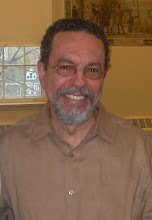My dear friend George Rivera does not like the term Latin jazz and he disagrees with the statement in my previous post that Latin jazz is the future of jazz. Maybe I overstated my point. First, who really knows what the future of jazz is? Second, Latin jazz is one of many possible futures. But the gist of my statement is that of all the possible futures of jazz, Latin jazz is a probable and highly promising one.
But George’s objection is not so much about what the future may hold but about the here and now. In his view, Latin jazz is, at best, a marketing label, at worst, a designation that confines and ultimately marginalizes musicians, limiting their circulation in the market and therefore their artistic and commercial success. To be designated a Latin jazz artist is bad not just because the category is meaningless but also because it ghettoizes musicians and prevents their incorporation into the mainstream.
As a political scientist I’m familiar with this sort of argument in regards to the question of cultural maintenance versus assimilation. The argument there goes beyond the question of integration versus marginality. The debate in politics is also about the viability of a stable political system. Luckily, no one has yet argued that Latin jazz is a divisive category that opens up a fault line within the society that threatens to tear it apart. Yet in musical circles, the debate is just as heated as in political and intellectual circles.
I’ll never forget the night at the Blue Note when George and Ray Barretto ganged up on me on the question of Latin jazz. When the subject came up, Barretto lit up like a firecracker and he was vehement. “What is that? There is no such thing!!,” he insisted. You can find Latin in jazz and jazz in Latin but Latin jazz does not exist. If a Japanese musician plays jazz, is that “Japanese jazz?” There was a reference to “Jibaro Jazz” in the conversation that elicited derisive laughter from Barretto. I referred to Miguel Zenon’s Jibaro, which had just come out, as an example. I said that if you added clave to jazz you had Latin jazz whether the musician was Latino or not. Nothing I said moved him or George. In the end we tacitly agreed to disagree.
From the Blue Note we went to a coffee shop on the East Village for coffee and dessert. By then our conversation had moved to other topics. I offered to pick up the tab seeking atonement for my Latin jazz heresy. Barretto made the sign of the cross with his right hand and said: “You are forgiven my son.” Then he gave me a ride to my hotel. When he dropped me off on the corner of 8th Ave and 23rd Street, he asked what I had been listening to recently and then we shook hands. Later on he was designated a Jazz Master. When he appeared in Ramsey Lewis’ Legends of Jazz, in what turned out to be his last recorded performance, he was introduced as “one of the leading lights of Latin jazz for more than, well, 40 years!”


